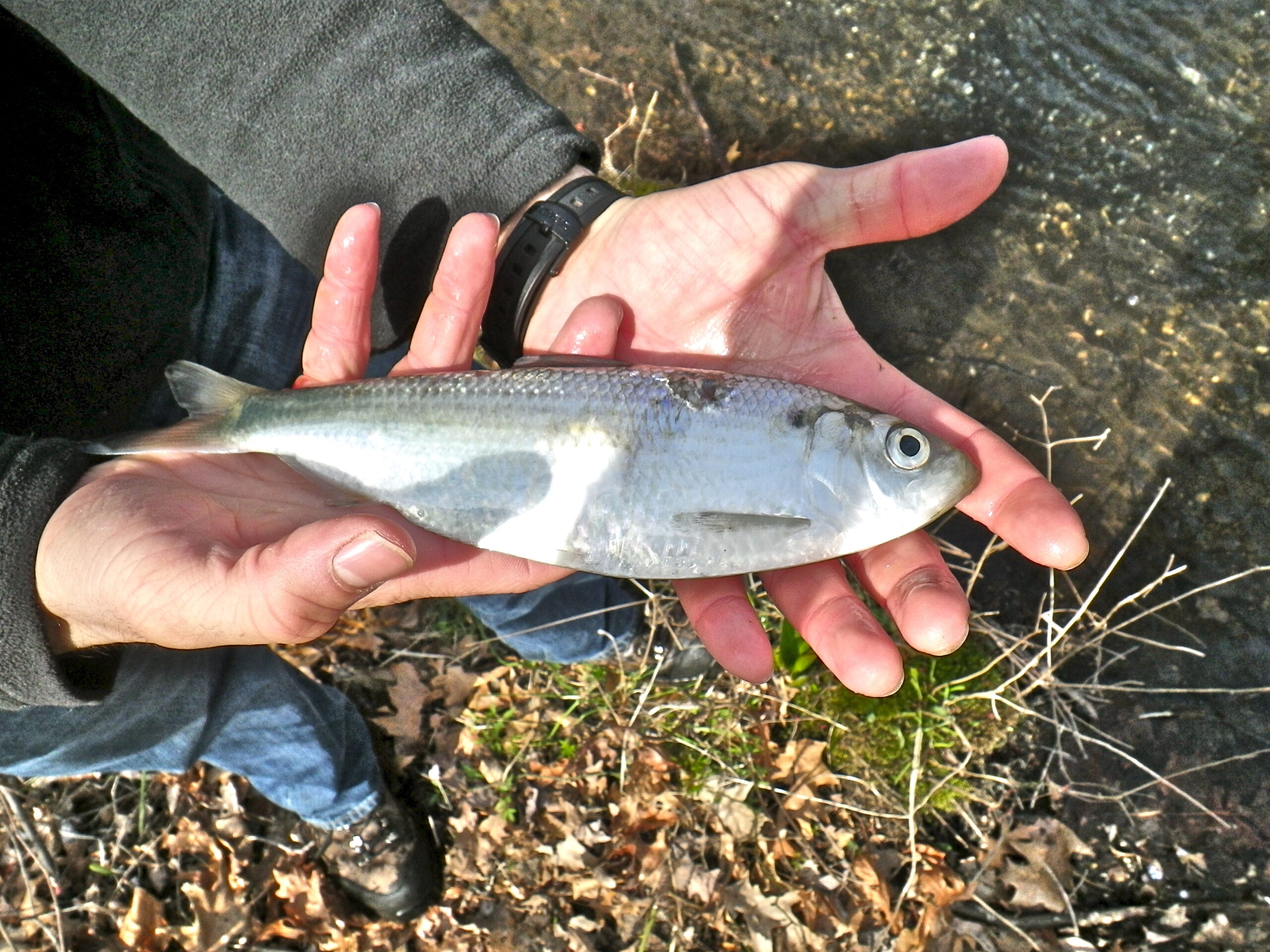The alewife (Alosa pseudoharengus) is an anadromous species of herring found in North America. It is one of the “typical” North American shads, attributed to the subgenus Pomolobus of the genus Alosa. As an adult it is a marine species found in the northern West Atlantic Ocean, moving into estuaries before swimming upstream to breed in freshwater habitats, but some populations live entirely in fresh water. It is best known for its invasion of the Great Lakes by using the Welland Canal to bypass Niagara Falls. Here, its population surged, peaking between the 1950s and 1980s to the detriment of many native species of fish. To control them biologically, Pacific salmon were introduced, only partially successfully. As a marine fish, the alewife is a US National Marine Fisheries Service “Species of Concern”.
Description
Alewife reach a maximum length of about 40 cm (16 in), but have an average length of about 25 cm (10 in). The front of the body is deep and larger than other fish found in the same waters, and its common name is said to come from comparison with a corpulent female tavern keeper (“ale-wife”).
In the North American Great Lakes
Alewife are known for their invasion of the Great Lakes by using the Welland Canal to bypass Niagara Falls. Alewife colonised the Great Lakes and became abundant mostly in Lake Huron and Lake Michigan. They reached their peak abundance from the 1950s through the 1980s. Alewife grew in number unchecked because the lakes lacked a top predator (lake trout were essentially wiped out around the same time by overfishing and the invasion of the sea lamprey). For a time, alewives, which often exhibit seasonal die-offs, washed up in windrows on the shorelines of the Great Lakes. Various species of Pacific salmon (first coho, and later the Chinook salmon) were introduced as predators. Though marginally successful, this led to the development of a salmon/alewife fishery popular with many sport anglers.
Conservation
Alewife populations have seen big declines throughout much of their range. Several threats have most likely contributed to their decline, including loss of habitat due to decreased access to spawning areas from the construction of dams and other impediments to migration, habitat degradation, fishing, and increased predation due to recovering striped bass populations.
In response to the declining population trend for alewives, the states of Massachusetts, Rhode Island, Connecticut, Virginia, and North Carolina have instituted moratoria on taking and possession.
The alewife is a US National Marine Fisheries Service Species of Concern, about which the National Oceanic and Atmospheric Administration, National Marine Fisheries Service, has some concerns regarding status and threats, but for which insufficient information is available to indicate a need to list the species under the US Endangered Species Act.
